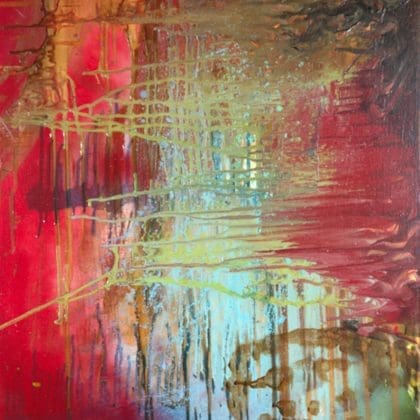In today’s vibrant and competitive art world, making your mark can feel overwhelming. With countless artists vying for attention, how can you ensure that your work stands out? The key lies in understanding your unique voice, effectively marketing your art, and building connections. This guide will help you navigate the busy art market and carve out your space.
1. Define Your Unique Artistic Voice
Your artistic voice is what makes your work distinctly yours. Understanding and honing it is the first step to standing out.
A. Identify Your Style and Themes
Explore Various Mediums: Experiment with different materials and techniques to discover what resonates with you.
Focus on Recurring Themes: Look for patterns in your work—what subjects or ideas do you keep returning to?
B. Create Authentic Work
Be True to Yourself: Your best work comes from genuine passion and inspiration. Don’t try to replicate what’s popular; instead, let your individuality shine through.
Tell Your Story: Incorporate personal experiences or messages into your art to create deeper connections with viewers.
2. Build a Strong Brand Identity
Establishing a recognizable brand helps differentiate you from others in the market. Your brand communicates who you are as an artist.
A. Develop a Cohesive Aesthetic
Color Palette: Choose a consistent color scheme that reflects your artistic voice.
Visual Elements: Utilize similar motifs or patterns across your work for visual coherence.
B. Craft Your Artist Statement
Tell Your Story: Write a clear and compelling artist statement that conveys your mission, inspiration, and artistic journey.
Engage Emotionally: Aim to connect with your audience on a personal level by sharing your passions and intentions.
3. Leverage Social Media and Online Platforms
Social media is a powerful tool for artists to showcase their work and connect with a wider audience.
A. Create Engaging Content
Behind-the-Scenes: Share your creative process through time-lapse videos, studio tours, or progress photos.
Storytelling Posts: Use captions to share the story behind each piece, inviting viewers to engage more deeply with your art.
B. Utilize Hashtags and Collaborations
Relevant Hashtags: Use specific and popular hashtags to increase your visibility. Research trending tags within your niche.
Collaborate with Other Artists: Team up with fellow creators for joint projects or exhibitions, expanding your reach and attracting new audiences.
4. Participate in Art Events and Exhibitions
Getting your work in front of people is crucial. Participating in art events allows you to showcase your talent and network with potential buyers and collaborators.
A. Apply to Local and National Exhibitions
Gallery Shows: Submit your work to local galleries or art shows to gain exposure.
Pop-Up Markets: Participate in art fairs or pop-up events where you can sell directly to the public.
B. Network Actively
Connect with Other Artists: Attend art openings, workshops, or conferences to meet other creators and share ideas.
Engage with Collectors and Influencers: Build relationships with art collectors, curators, and social media influencers who can help promote your work.
5. Offer Unique Experiences
Creating memorable experiences for your audience can set you apart from other artists in the market.
A. Host Workshops or Classes
Share Your Skills: Offer art classes or workshops to engage with your community and share your techniques.
Create a Personal Connection: Teaching others can build strong relationships and foster a loyal following.
B. Develop Limited Editions or Exclusive Collections
Create Scarcity: Consider offering limited edition prints or exclusive pieces to create demand and urgency.
Themed Collections: Curate collections around specific themes or events to attract attention and spark interest.
Conclusion: Take Action and Make Your Mark!
Standing out in a busy art market requires a combination of self-awareness, branding, and strategic marketing. By defining your unique artistic voice, building a strong brand identity, leveraging social media, participating in events, and offering unique experiences, you can carve out your space in the art world.
Now it’s time to act: Choose one strategy from this guide that resonates with you and implement it today. Whether it’s updating your artist statement, reaching out to collaborate with another artist, or planning your next exhibition, taking action is the first step toward making your mark in the art market. Remember, every artist’s journey is unique, so embrace your individuality and let your creativity shine!




